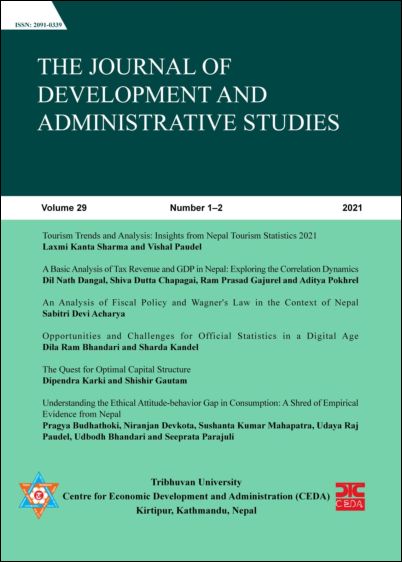The Quest for Optimal Capital Structure
DOI:
https://doi.org/10.3126/jodas.v29i1-2.68214Keywords:
Optimal capital structure, Banks, Profitability, Return on equityAbstract
This study aims to determine an optimal capital structure (CS) and profitability in Nepalese commercial banks over ten years spanning from 2008/09 to 2017/18. The study utilizes 10 sampled banks and employs statistical techniques such as correlation analysis and regression analysis, along with descriptive statistics. The findings reveal that the debt assets ratio is inversely proportional to net profit but directly proportional to return on equity (ROE). It is observed that the average debt/equity ratio of Nepalese commercial banks over the past decade was 0.103551, indicating a high reliance on debt. Correlation analysis demonstrates that capital structure decisions significantly impact net profit but not ROE, except for paid-up capital. Regression analysis further confirms the negative impact of bank size and paid-up capital on profitability. The study concludes that Nepalese commercial banks prefer equity financing and should carefully consider capital structure decisions to maximize profitability. Additionally, it suggests further research on variables such as capital adequacy ratio, growth, tax, and market value of paid-up capital to better understand the relationship between capital structure and profitability. The article recommends stakeholders to focus on equity financing and analyze all factors impacting bank profitability. Optimal capital structure decisions based on study-based findings are crucial for the long-term survival of Nepalese commercial banks.
Downloads
Downloads
Published
How to Cite
Issue
Section
License
The copyright of the accepted articles is reserved by the Centre for Economic Development and Administration (CEDA), Tribhuvan University (TU). No part of the article published in this journal should be reproduced except provided by the law currently in force without the written consent of the centre.




